Hi, friends! Welcome to Installer No. 58, your guide to the best and Verge-iest stuff in the world. (If you’re new here, welcome, Batman forever, and also you can read all the old editions at the Installer homepage.)
Technology
Why mission TRISHNA has an edge over other similar missions?- The Week
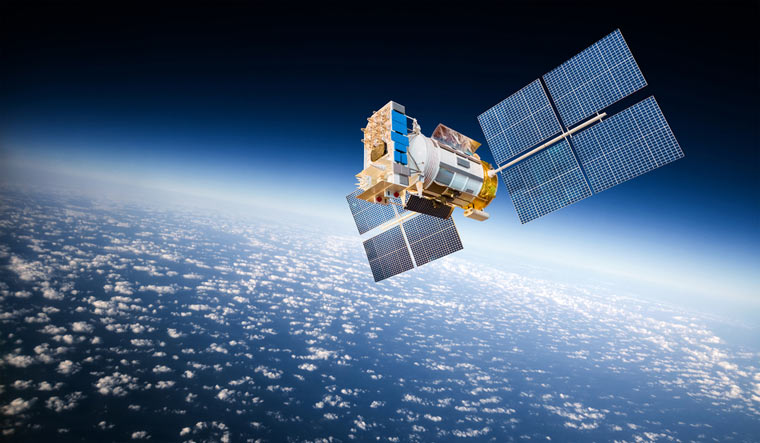
At a time when climate change and managing water resources are major global concerns, the importance of advanced technology for monitoring and data collection is greater than ever. One notable effort in this field is the partnership between the Indian Space Research Organisation (ISRO) and the French space agency, Centre National d’Études Spatiales (CNES). Together, they have developed an innovative thermal imaging satellite called TRISHNA. The satellite, weighing approximately 770 kg, is expected to orbit at an altitude of 761 km in a sun-synchronous orbit, with a local crossing time (descending node) of 1 p.m., ensuring consistent lighting conditions for its observations. The mission is set to last for five years, with a launch date targeted for 2025.
This joint mission aims to deliver high-quality thermal images to help us better understand and tackle environmental issues, especially those connected to climate change and water management. TRISHNA, short for Thermal infra Red Imaging Satellite for High-resolution Natural resource Assessment, is built to provide exceptional details about the Earth’s land and water temperatures. These measurements are crucial for various uses, such as farming strategies, tracking urban heat, and managing disasters.
“The satellite’s advanced technology also addresses food security challenges by focusing on the impacts of human-induced climate change and improving water resource management through evapotranspiration monitoring. TRISHNA aims to enhance our understanding significantly and offer more accurate data for scientists, policymakers, and environmentalists around the world,” explained space expert Girish Linganna.
Evapotranspiration is the process by which water is transferred from the land to the atmosphere through two main mechanisms: evaporation from soil and water surfaces, and transpiration from plants. It’s a crucial part of the water cycle and helps in understanding water use and availability, especially in agriculture and climate studies.
The TRISHNA satellite comes with two main payloads—Thermal Infra-Red (TIR) Payload provided by CNES which features a four-channel long-wave infrared imaging sensor capable of high-resolution surface temperature and emissivity mapping. Then the second payload Visible – Near Infra-Red – Short Wave Infra-Red (VNIR-SWIR) Payload developed by ISRO which includes seven spectral bands designed for detailed mapping of surface reflectance in VSWIR bands (Visible, Short-Wave Infrared) and will help generate important biophysical and radiation budget variables.
The satellite will orbit the Earth in a sun-synchronous path at an altitude of 761 km, crossing the equator at 12:30 PM local time. This orbit allows the satellite to capture images with a spatial resolution of 57 meters for land and coastal areas, and 1 km for ocean and polar regions. The mission is planned to last for 5 years.
“Thermal imaging satellites are essential for monitoring Earth’s climate, water resources, and environmental changes. They use thermal sensors to detect heat variations on the Earth’s surface, aiding studies on urban heat islands, agricultural health, and forest fire detection,” added Linganna.
There have been other similar programs such as the USA’s Landsat, Europe’s Sentinel-3, and China’s Gaofen series. The Landsat program, overseen by NASA and USGS, has been providing continuous Earth observation data since 1972. This program is essential for monitoring environmental changes, land use, and natural resources with high-quality satellite images. The latest data from the Landsat program, featuring Landsat 9, is freely accessible to the public. Launched on September 27, 2021, Lands at 9 continues the work of previous satellites by offering detailed images of Earth. This data is vital for tracking land resources and understanding environmental changes. One can find this data on platforms like EarthExplorer, LandsatLook, and GloVis.
On the other hand Sentinel-3(Europe) is a key part of the Copernicus Programme, which helps monitor our oceans and land. There are two satellites, Sentinel-3A and Sentinel-3B, that provide detailed images and measurements. These satellites are useful for studying the oceans, water bodies, and land, and they play an important role in climate change research and protecting the environment. Recently, there have been some issues with the quality of Sea and Land Surface Temperature Radiometer (SLSTR)products due to satellite maneuvers, and the security system has been upgraded.
On the other hand China’s Gaofen series is part of the China High-resolution Earth Observation System (CHEOS). The most recent satellite, Gaofen 12 (03), was launched in 2022. It orbits close to the poles and uses microwave remote sensing technology. This satellite helps improve land surveys, urban planning, and disaster relief efforts. Each of these programs contributes unique capabilities and data sets, advancing scientific understanding and practical applications in agriculture, water management, and disaster response.
The TRISHNA satellite, a collaboration between ISRO and CNES, represents a significant advancement in thermal imaging for climate and water monitoring. Compared to other prominent satellites, Trishna’s cutting-edge technology captures high-resolution thermal data with exceptional precision. Landsat’s historical data is invaluable, but TRISHNA offers higher resolution and sensitivity. Sentinel-3 excels in marine and coastal monitoring, while TRISHNA is tailored for terrestrial applications. Gaofen-5 provides detailed data on air pollution and water quality, yet TRISHNA’s focus on climate and water monitoring offers more targeted thermal data. TRISHNA’s frequent revisits and high temporal resolution enable near real-time monitoring of climatic and hydrological phenomena, enhancing our ability to track local and global climate patterns,” explained Linganna.
The ISRO-CNES collaboration on TRISHNA highlights the potential of international cooperation in addressing global challenges like climate change and water resource management. TRISHNA, with its advanced thermal imaging technology, complements existing systems by providing higher resolution data and more frequent revisit times, enhancing global environmental monitoring. Its high spatial resolution and superior thermal sensitivity place it at the forefront of thermal imaging satellites. TRISHNA’s data will support applications such as agricultural planning, urban heat island analysis, and climate change studies, playing a critical role in informing policy decisions and fostering sustainable development.
“TRISHNA’s technical prowess lies in its advanced payloads. The Thermal Infra-Red (TIR) payload, provided by CNES, features a four-channel long-wave infrared imaging sensor capable of high-resolution surface temperature and emissivity mapping. The Visible – Near Infra-Red – Short Wave Infra-Red (VNIR-SWIR) payload, developed by ISRO, includes seven spectral bands designed for detailed mapping of surface reflectance of VSWIR bands to generate important biophysical and radiation budget variables,” said Srimathy Kesan, founder and CEO of Space Kidz India, which is into design, fabrication and launch of small satellites, spacecraft and ground systems.
This expert further says that when compared to other thermal imaging satellites globally, TRISHNA stands out for its high spatial and temporal resolution. “If one compares it with the British company SatVu’s HOTSAT-1 satellite, which also focuses on high-resolution thermal imaging, captures thermal images from space revealing the planet’s surface temperature in great detail. However, HOTSAT-1’s resolution is down to 33 feet, which, while impressive, does not match TRISHNA’s ambition to achieve a resolution better than 100 meters with frequent revisits several times a week,” added Kesan.
Technology
The A&Ultima SP3000M is the portable player you need!
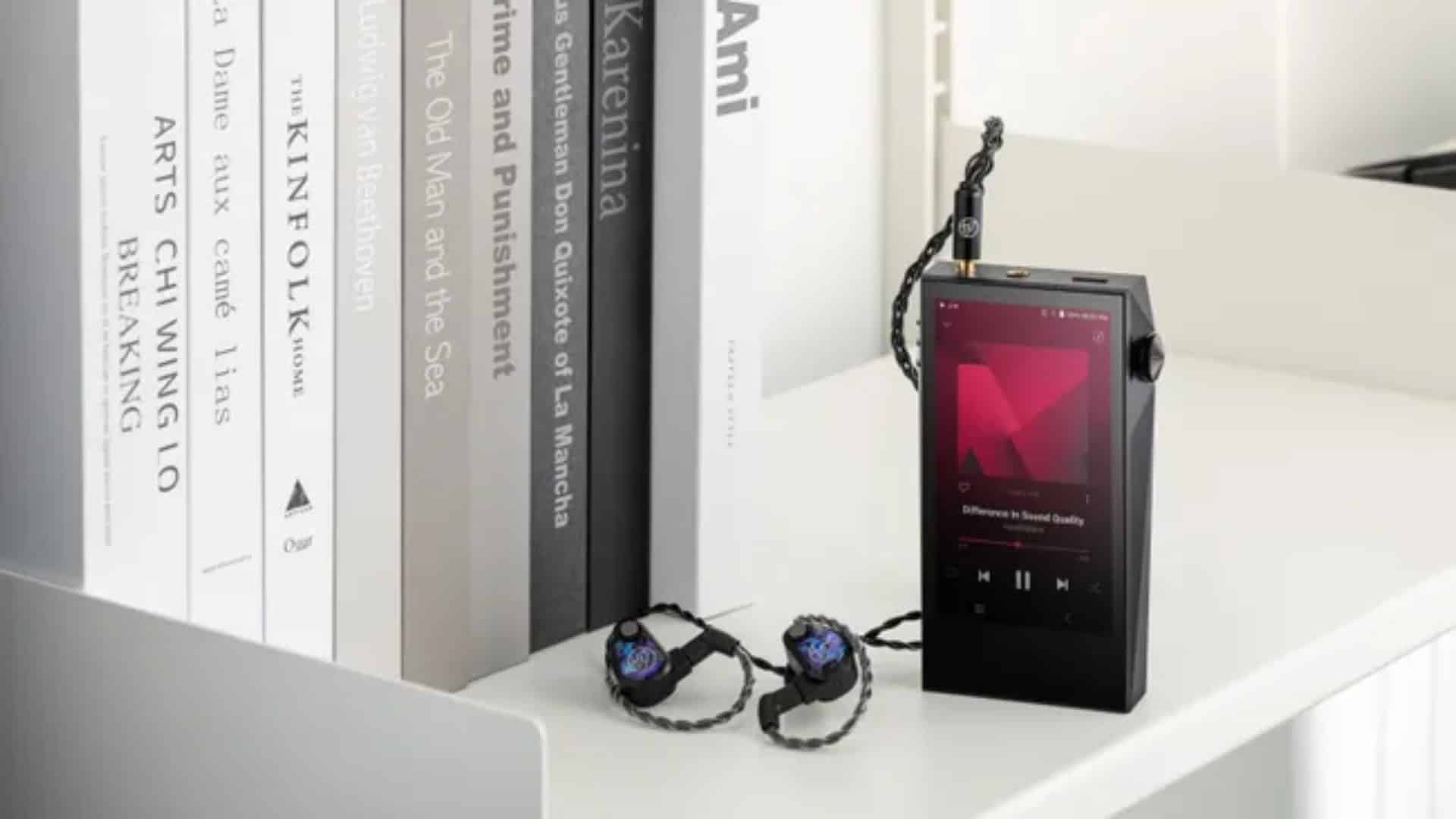
Remember back in the day when the MP3 player was all the rage? Well, that device pretty much died out in the mainstream once smartphones took on the role of music player. However, the MP3 player was reincarnated as a niche hi-fi audio player for audiophiles called a DAP (Digital Audio Player). The latest portable player from audio brand Astell&Kern is the A&Ultima SP3000M, and it’s the device to get.
Astell&Kern has a lineage dating back more than a decade, having launched its first audio player back in 2013. Founded as a high-end audio device company, Astell&Kern is one of the top brands when it comes to portable players. Since then, it has developed some amazing tech like several DAPs, headphones, speakers, amplifiers, and network players.
Why should the A&Ultima SP3000M be your next device?
This isn’t your typical store-shelf MP3 player, so it has a price to reflect that. It comes in at a toasty $2,300 (£2,299/€2,599), which isn’t chump change. However, this is lower compared to the more expensive A&Ultima SP3000, which is the more premium version of this portable player. That one comes in at $3,699 (£3799). Be that as it may, the SP3000M brings some serious audio chops that make it an extraordinary device.
A treat for the eyes as well as the ears
Astell&Kern has established a unique design aesthetic for its devices, and the A&Ultima SP3000M continues that legacy. It has a design that would remind people of a high-quality amp. It’s a rather blocky device that extends a bit at the top.
What’s most notable about the device is the knob at the top of the right of the device. The knob is surrounded by subtle geometric shapes that add distinction to the device. Also, the knob has a unique texture to it. Moving to the other side, we see the three buttons.
On the back of the DAP, there are two textures that look elegant. We see the A&Ultima branding at the top. Moving to the top of the device, we see the two headphone ports along with the power button.
The star of the show is the sizable display on the front. This is what you’ll use to navigate the software and choose the music that you want to listen to.
This is a beautiful-looking device. It definitely has an eye-catching design.
Top-of-the-line tech
This might be a less expensive version of the SP3000, but that doesn’t mean that it’s lacking in the hardware department. In fact, it carries over one of the most important innovations found in the SP3000, and this is the separation of the analog and digital processing.
Most other DAPs process both the analog and digital signals on the same chip, which is the DAC. While that’s not the worst thing in the world, Astell&Kern decided to rewrite the book on audio and separate this process.
The A&Ultima SP3000M uses a set of two AK4191EQ chips and a digital delta-sigma modulator to process the digital signal and reduce the noise. After that, the signal is sent to a set of premium AK4499EX DACs to convert the digital signal into an analog signal.
The digital and analog signals are processed in separate parts of the device. This boosts the sound quality, and it’s something that you can only get from an Astell&Kern device. This is called the HEXA structure.
Further improving the audio quality, there’s a silver-plated shield can. It’s designed to eliminate any electromagnetic interference from affecting your music.
Audio quality
This device’s incredible hardware is capable of pushing some high-quality audio. For starters, the A&Ultima SP3000M uses both unbalanced and balanced wired output through the 3.5mm and 4.4mm headphone jacks, respectively. It supports native DSD512 and up to 32-bit/768kHz audio playback.
The device can play your MP3 files, but if you’re an audiophile, you’re not likely to carry around too many of those. Along with those, you’re also able to play WAV, FLAC, MQA, WMA, OGG, APE, AAC, ALAC, AIFF, DFF, and DSF files. These include popular uncompressed audio formats so, you’ll be able to hear bit-perfect music.
Along with playing music over a wire, you can also use Bluetooth connectivity. Even though Bluetooth technology doesn’t give the best audio quality, the A&Ultima SP3000M is compatible with some of the top audio codecs on the market. These include Sony’s LDAC and Qualcomm’s aptX HD. LDAC allows you to stream audio at up to 24-bit/96kHz and aptX lets you stream at up to 24-bit/48kHz.
Connectivity
You’re able to listen to your favorite music files, but this is an all-around music-listening device, so you know that there is more than one way of playing music. The A&Ultima SP3000M can download apps such as Spotify, Amazon Music, Tidal, Apple Music, and others. So, you can access your music right from these services.
If you’re a person who uses Roon devices, then you’re in luck. The A&Ultima SP3000M is compatible with the Roon standard. When it comes to connecting to other devices, BT Sink allows you to connect the A&Ultima SP3000M to external devices like computers and phones via Bluetooth. You’ll be able to stream your audio via the high-quality audio codecs mentioned above. This ensures hi-fi audio no matter what.
Device specs
The A&Ultima SP3000M uses the Qualcomm Snapdragon 6125, This is an octa-core processor that should give it some good performance. You’re not exactly going to be running Genshin Impact on it, so you’ll be fine with the hardware.
Along with that, there’s a decent 8GB of DDR4 RAM and 256GB of storage. These are specs that you’d see on a mid-range phone, but they’re more than enough for an audio player.
The A&Ultima SP3000M has a 4.1-inch 720p display. That’s decent enough to see your music apps and interface.
Keeping the lights on, there’s a 4,200mAh battery, and that equates to about 10 hours of continuous playback. Charging it is a pretty slow affair, as it takes about 3.5 hours. So, if you’re planning on using this on a long trip or a day out, you’ll want to plan accordingly.
Audio Specs
- Frequency Response:
(Unbalanced ) ±0.020dB (Condition : 20Hz~20kHz) (Balanced) ±0.025dB (Condition : 20Hz~20kHz)
(Unbalanced ) ±0.032dB (Condition : 20Hz~70kHz)
(Balanced) ±0.025dB (Condition : 20Hz~70kHz) - S/N:
(Unbalanced) 126dB @ 1kHz
(Balanced) 130dB @ 1kHz - Crosstalk:
(Unbalanced) -140dB @ 1kHz
(Balanced) -144dB @ 1kHz - THD+N:
(Unbalanced) 0.0005% @ 1kHz
(Balanced) 0.0003% @ 1kHz - IMD SMPTE:
(Unbalanced/Balanced) 0.0004% 800Hz 10kHz (4:1) - Output Impedance:
(Unbalanced) 3.5mm (0.6ohm)
(Balanced) 4.4mm (1.2ohm) - Decoding:
Support up to 32bit / 768kHz playback - Input:
USB Type-C input (for charging & PC & MAC) - Outputs:
Unbalanced Out (3.5mm), Balanced Out 4.4m (only 5-pole supported) - Wi-Fi:
802.11 a/b/g/n/ac (2.4/5GHz) - Bluetooth:
V5.0 (A2DP, AVRCP, Qualcomm® aptX™ HD, LDAC, LHDC) - Dimensions (W x H x D):
2.72in x 4.7in x .78in (69.1mm x 119.6mm x 18.8mm) - Weight:
8.36oz (237g)
Technology
Apple’s Week of Announcements starts Monday
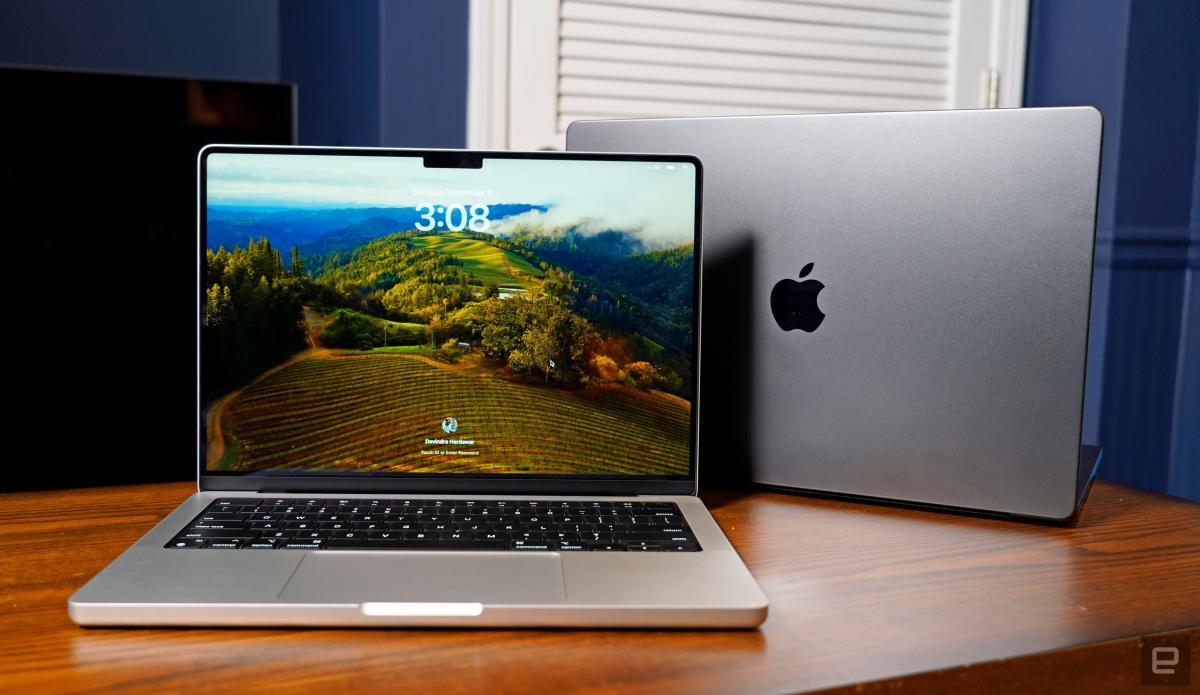
If you’re fluent with concepts like release schedules and calendars, you may notice Apple hasn’t updated its computers in a while. It’s nearly a full year since the iMac and MacBook Pro got speed bumps, and just over a year for the Mac Pro and Mac Studio. .
It’s easy to assume we’ll see those models getting pushed from variants of the M3 to the M4. Given the M4’s focus on AI, expect plenty of attention on Apple Intelligence, which comes to users as part of iOS 18.1’s update at the same time. That each model is likely to be announced piecemeal across the week, rather than at one glitzy event, suggests we won’t see too many other big changes.
The rumor suggests only the Mac Mini will get a major hardware revision, shrinking its chassis to a far smaller footprint. If I’m honest, I’m secretly hoping the Mac Mini doesn’t become the same size as an Apple TV model, which has been hinted at. Especially if it means saddling us with a beefy power brick to clutter the floor instead.
— Dan Cooper
Get this delivered daily direct to your inbox. Subscribe right here!
News in Brief
The longer you shilly-shally, the harder the pain will be.
The UN has published a new report on the climate crisis. It can be best summed up as “are you even listening?” . If we want to avoid climate events of Biblical proportions, we’re going to need to curb emissions far more aggressively.
Does Samsung know why it bothers making Fan Edition phones?
After each flagship phone launch, Samsung releases a Fan Edition, offering most of the same features in a slightly cheaper package. . After all, you can pick up a no-compromise version of the handset for almost the same price when it goes on sale.
Including a ban on giving AI control over nuclear weapons.
The White House has issued a memorandum outlining where AI should — and shouldn’t — be used in military and intelligence applications. . Now all we need to do is make sure the AI doesn’t get smart enough to trick people into making those decisions on its behalf.
Good.
Bluesky has revealed its plans to make money without simply handing the platform over to advertisers. . Hopefully, the users who flocked to Bluesky from that place will appreciate it enough to pay to keep the lights on.
Science & Environment
Oil slides over 4% as Israel’s attack on Iran unlikely to disrupt supplies

View of Iran’s oil industry installations in Mahshahr, Khuzestan province, southern Iran.
Kaveh Kazemi | Getty Images
Oil prices will remain under pressure for the rest of this year, it may be difficult to see Brent crude oil prices reaching $80 in the foreseeable future.
Andy Lipow
president at Lipow Oil Associates
“The recent Israel military action is unlikely to be seen by the market as leading to an escalation that impacts oil supply,” Citi analysts wrote in a note on Monday, cutting the bank’s Brent oil forecast by $4 to $70 per barrel over the next three months.
Oil markets are also staring at an oversupply. “With Israel deliberately, and perhaps with some American encouragement, avoiding the targeting of crude oil facilities, the oil market is back to looking at an oversupplied market,” said Andy Lipow, president at Lipow Oil Associates.
Oil production has been increasing not just in key countries such as U.S., Canada and Brazil, but even among smaller players such as Argentina and Senegal, he added.
“Oil prices will remain under pressure for the rest of this year, it may be difficult to see Brent crude oil prices reaching $80 in the foreseeable future,” Lipow told CNBC via email.
The risk premium has come off a few dollars a barrel as the more limited nature of the strikes, including avoiding oil infrastructure, have raised hopes for a de-escalatory pathway, said Saul Kavonic, an energy analyst at MST Marquee.

Oil prices year-to-date
The spotlight now will be on whether Iran will counter the attack in the coming weeks, which would see risk premium rise again, Kavonic told CNBC, noting that the overall trend still remains one of escalation, with the scope for another round of attacks remaining high.
During a cabinet meeting on Sunday, Iranian President Masoud Pezeshkian emphasized Iran’s right to react to Israel’s attack, but maintained that they do not seek war.
“We do not seek war, but we will defend our country and the rights of our people. We will give a proportionate response to the aggression,” he said.
Market attention will turn to Hamas‑Israel and Israel‑Hezbollah ceasefire talks that resumed over the weekend, director of mining and energy commodities research at Commonwealth Bank of Australia, Vivek Dhar said.
“Despite Israel’s choice of a low‑aggression response to Iran, we have doubts that Israel and Iran’s proxies (i.e. Hamas and Hezbollah) are on track for an enduring ceasefire,” Dhar wrote in a note.
Technology
Batman: Arkham Shadow is the VR game I’ve been waiting for

This week, I’ve been reading about Simone Giertz and billionaire assistants and Checo Pérez and Call Her Daddy, learning about “Earthrise,” listening to Quinta Brunson and Conan O’Brien talk comedy, trying to decide whether to get super into Bluesky or just quit social altogether, and throwing myself into baseball so I can pretend I know what I’m talking about during the World Series.
I also have for you an excellent new VR game, a delightful new reading gadget, a nice RSS reader update, a new browser worth trying, and much more.
(As always, the best part of Installer is your ideas and tips. What are you into right now? What does everyone else need to be watching / reading / playing / baking / cutting up with scissors this week? Tell me everything: installer@theverge.com. And if you know someone else who might enjoy Installer, forward it to them and tell them to subscribe here.)
The Drop
- Batman: Arkham Shadow. I am hopelessly biased in favor of this game, the latest in my all-time favorite series of video games. But a surprising amount of what worked for the old Arkham games works in VR, too — the story, as always, is kind of whatever, but the action is fun and intense and everything I wanted it to be. This is the most I’ve used my Quest in months.
- The Boox Palma 2. Another week, another reading gadget I’m going to feel ridiculous buying but definitely buy anyway. One of my favorite devices of the year got a faster processor, new Android… and not much else. But I still love this tiny Android e-reader.
- Hasan Minhaj: Off With His Head. I’ve been waiting for this ever since that New Yorker story, and it delivers. His whole digression into crypto bros and podcast listeners has been all over my For You pages this week, and for good reason.
- Inoreader. Inoreader is a really good RSS reader, but I always thought it was… ugly. The new redesign is really nice! It’s still very dense and text-heavy, but in a news reader, I actually like that. I’m also enjoying all the new filters, which are helping me find to-do list app news easier than ever.
- “Shrek ASMR.” One of the most off-the-wall, committed-to-the-bit things I’ve ever seen on YouTube: a full remake of Shrek, ASMR-style. I loaded up the video after reading a really fun story about it from our friends at Polygon and ended up watching the whole thing. It’s remarkable… in so many senses.
- Vivaldi. I’m still slightly torn on the new tab design, which is lovely but kind of busy. But I love the new Dashboard feature, which just lets you embed a bunch of apps and websites and see them all at once. It’s like what iGoogle used to be, only much better.
- Sonic x Shadow Generations. Sonic. And Evil Sonic. What else do you need to know? All the reviews I’ve read say this game is an excellent remaster of a classic, plus lots of new stuff including a huge new Shadow-focused campaign. I immediately cleared space on my Switch for this one.
- Notion Forms. Notion’s quest to be all things to all people continues! The new Notion Mail app looks pretty great, but day to day, I think Forms is a bigger deal. Even if you just use Notion (or Sheets or Airtable or whatever), setting up a bunch of forms for easy data input is such a simple way to make your life easier.
- Mailbird. One of the best — maybe the best — Windows email apps is now available on the Mac. The free tier is pretty limited, but at least it’ll give you a sense if the app is right for you. I’m still a Mimestream devotee, but especially if you’re balancing Outlook and Gmail, this is worth a look.
- Computer use in Claude. Anthropic’s AI bot got an upgrade this week, including a new feature that can just use your computer on your behalf. The video explaining how it works is great and a useful explainer of how simple some of this complex stuff really can be. Eventually. Someday.
Screen share
I reviewed the new iPad Mini this week and, as a result, spent a bunch of time setting up a new tablet and thinking a lot about how to organize the homescreen. I’ve deliberately kept this space phone-centric so far, because I really think you can tell a lot about a person just by looking at their phone, but after spending all that time thinking about my iPad life, I’m wondering if I need to broaden the scope a little bit. Maybe I should get people to share, like, their computer desktops? Or their game console homescreens? Maybe the first screen of their smart TVs? I don’t know, there are a lot of homescreens out there. We’ll try some stuff.
All that said, here’s my iPad Mini homescreen, plus some info on the apps I’m using and why:
The tablet: iPad Mini, 2024. I love the iPad Mini. I wish this one were a lot better and that Apple would care about the Mini a lot more, but here we are.
The wallpaper: Apple’s weather wallpaper, which adapts to the current weather outside. It’s a total gimmick, and I am shocked at how much I love it.
The apps: Balatro, Madden, EA Sports FC, Retro Goal, Retro Bowl, Delta, Call of Duty: Warzone, Coffee Golf, Real Racing 3, Tiny Wings, NYT Games, The New York Times, Apple News, The Washington Post, Unread, Netflix, TikTok, Disney Plus, Prime Video, Sling, YouTube, Peacock, Max, Hulu, ESPN, Arc, Kindle, Workflowy, Readwise Reader, Pocket Casts, Spotify, Mela.
I feel like there are two ways you can go with your iPad. You can use it to try and do laptop things, or you can decide to use your iPad mostly as a way to avoid doing laptop things. I’ve picked the latter: roughly 100 percent of my iPad use is reading, watching, and playing. I don’t have Gmail or Slack or Google Docs on here; nothing is allowed to send me notifications. My iPad is a place for relaxation and fun, period.
I like and use all these apps, but there are a few to call out specifically: I’ve tried a lot of recipe apps, and Mela is still the simplest and the best at pulling recipes out of websites; Balatro is the most addicting game I’ve downloaded in years; I finally became an Apple News Plus subscriber and am blown away by how much I’m using it; the iPad Mini is the perfect tablet to use as a steering wheel, and Real Racing 3 is a fabulous driving game.
My dock is reserved for the apps I use at least close to every day, which means it’s reading, notes, recipes, podcasts, and music. (I just realized I should move Workflowy, so it’s not between the reading apps — I’ll get to that.) The most-used non-dock app right now is probably Peacock, which has Community and Parks and Recreation and Brooklyn Nine-Nine and is, thus, the streaming service I have on in the background basically all the time.
For years, I tried to turn my iPad into something like a laptop replacement. But the more I’ve leaned into it being a purely recreational device, the screen for when I don’t want to be stressed out by screens, the more I find myself using it. It’s a weird and expensive strategy, but it’s working for me.
Crowdsourced
Here’s what the Installer community is into this week. I want to know what you’re into right now as well! Email installer@theverge.com or message me on Signal — @davidpierce.11 — with your recommendations for anything and everything, and we’ll feature some of our favorites here every week. For even more great recommendations, check out the replies to this post on Threads.
“I saw Adi ask for a Goodreads alternative and wanted to suggest The StoryGraph! It’s really great at showcasing stats about what you read, rather than the updates-sharing focus of GR, and it has really nice monthly summaries!” – Aurora
“Reading about Adi’s suffering with LibraryThing, I remembered that just a few days ago, I started using Hardcover, and so far, I’m finding it really cool.” – AH
“Taskly is a very straightforward list app for iOS with absolutely nothing else. I have been looking for something to manage my grocery list or just things I need to buy. Twodos is another such app, except it has a very clever way to separate the list into two categories: Sooner and Later. That’s something I really love about it.” – Karan
“I just put about six hours into Wagotabi, and I’m wildly impressed. It is one of the most clever and effective Japanese learning games I’ve ever played. It’s structured like Pokémon, but instead of catching monsters, you’re learning Japanese words and grammar. Instead of battling, you’re engaging in social interactions that put your new skills to the test. Over time, it replaces more and more English text with Japanese. And it’s genuinely fun! Duolingo be damned; Wagotabi is the king.” – Tom
“I grabbed a Steam Deck OLED a few weeks back and have been diving into games I just kind of missed. Uncharted 4 and Uncharted: The Lost Legacy were great. Now digging into the modern Tomb Raider trilogy. I guess I like adventure games when FIFA isn’t available.” – Andi
“I upgrade phones every two to three years, and one way I keep it fresh is to get a new case every year. This year’s case upgrade was from Keyway Designs. They make gorgeous wood and metal phone cases (and other goodies). Check them out!” – Bill
“Trying a new second brain app, Sublime, that adds a few interesting features. Will try for a few weeks and see how it grows on me.” – Miguel
“I have a seriously good Switch controller for you: the GuliKit Zen Pro is awesome, supports everything the Pro Controller does, and has Hall effect sticks to boot. It’s also a lot cheaper than the Pro Controller, so I’d recommend it for anyone buying a new Switch, too!” – Ben
“I’ve been using Capture for iOS, and it’s low-key amazing. Like should be a built-in feature-level amazing. Anything I come across online, I can set aside, hold it off to the side, and then send it where it needs to go later.” – Max
“The premise of MovieCart is simple: it’s for watching full-length movies on an actual Atari 2600. The reality is quite complex. It’s the work of a mad genius, and you may feel like one, too, once you actually get a film running!” – Tom
Signing off
Approximately every single person on the internet has been talking about the Chicken Shop Date episode with Andrew Garfield, which really is as charming as you can imagine. (Garfield has a history of great YouTube moments, like his convo about grief with Stephen Colbert.) The episode sent me down the rabbit hole of all things Chicken Shop Date, and it turns out, host Amelia Dimoldenberg has been through a truly fascinating ride as a creator.
Last year, she did a great interview with Colin and Samir, which doubles as a (very funny and silly) masterclass in how to turn a YouTube channel into a show at the very center of pop culture. All my favorite creator stories are equal parts ruthless execution and constant aimless experimentation, and Dimoldenberg is a perfect example of both.
Technology
Quordle today – hints and answers for Monday, October 28 (game #1008)
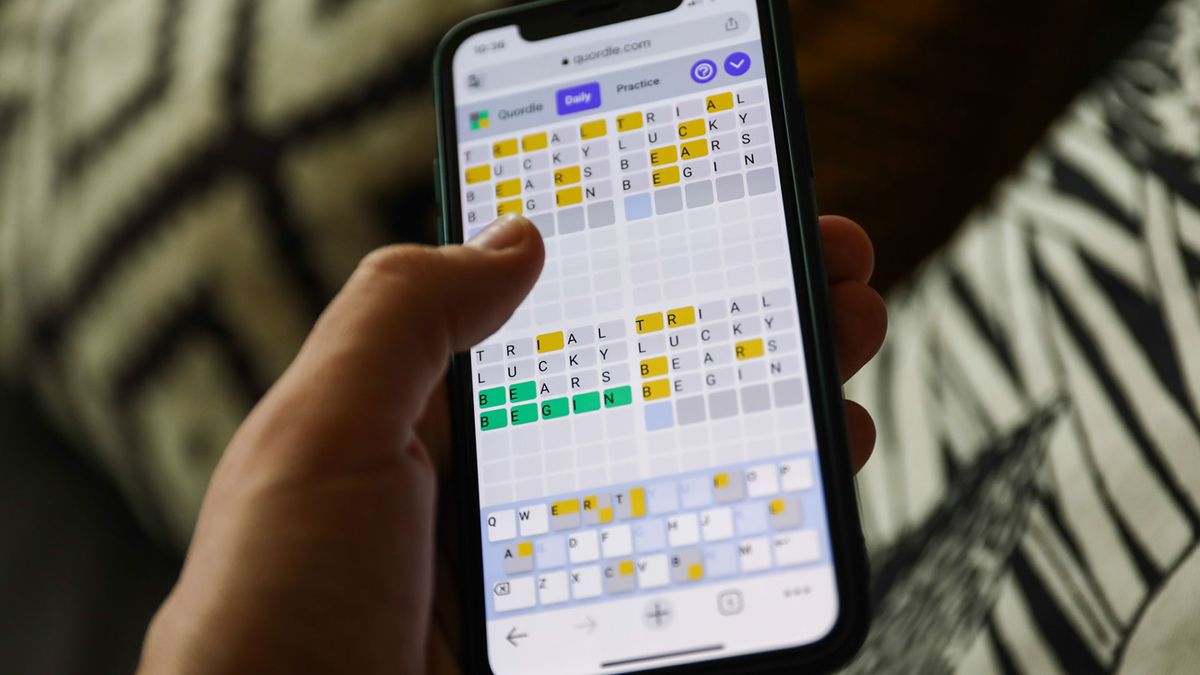
Quordle was one of the original Wordle alternatives and is still going strong now more than 1,000 games later. It offers a genuine challenge, though, so read on if you need some Quordle hints today – or scroll down further for the answers.
Enjoy playing word games? You can also check out my Wordle today, NYT Connections today and NYT Strands today pages for hints and answers for those puzzles.
SPOILER WARNING: Information about Quordle today is below, so don’t read on if you don’t want to know the answers.

Quordle today (game #1008) – hint #1 – Vowels
How many different vowels are in Quordle today?
• The number of different vowels in Quordle today is 5*.
* Note that by vowel we mean the five standard vowels (A, E, I, O, U), not Y (which is sometimes counted as a vowel too).
Quordle today (game #1008) – hint #2 – repeated letters
Do any of today’s Quordle answers contain repeated letters?
• The number of Quordle answers containing a repeated letter today is 3.
Quordle today (game #1008) – hint #3 – uncommon letters
Do the letters Q, Z, X or J appear in Quordle today?
• No. None of Q, Z, X or J appear among today’s Quordle answers.
Quordle today (game #1008) – hint #4 – starting letters (1)
Do any of today’s Quordle puzzles start with the same letter?
• The number of today’s Quordle answers starting with the same letter is 0.
If you just want to know the answers at this stage, simply scroll down. If you’re not ready yet then here’s one more clue to make things a lot easier:
Quordle today (game #1008) – hint #5 – starting letters (2)
What letters do today’s Quordle answers start with?
• M
• L
• G
• C
Right, the answers are below, so DO NOT SCROLL ANY FURTHER IF YOU DON’T WANT TO SEE THEM.
Quordle today (game #1008) – the answers
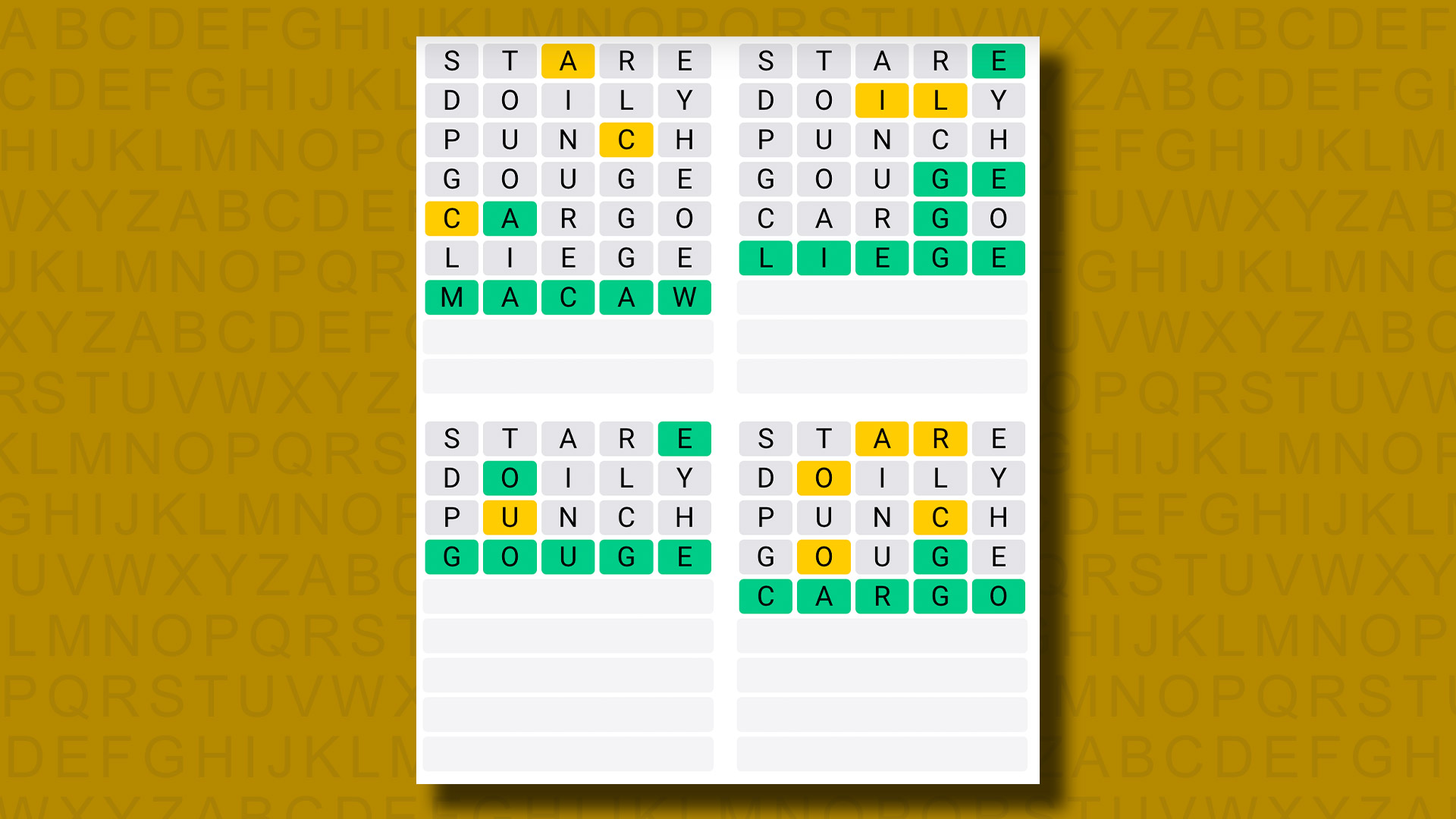
The answers to today’s Quordle, game #1008, are…
Quordle really threw all of the repeats at us today, with MACAW, LIEGE and GOUGE each containing one. These are all fairly tough words in their own right, too. MACAW has a W at the end, which isn’t a common thing, while LIEGE is just not a widely used word at all. I solved all four thanks to help from my start words but I suspect others won’t be so lucky today.
How did you do today? Send me an email and let me know.
Daily Sequence today (game #1008) – the answers
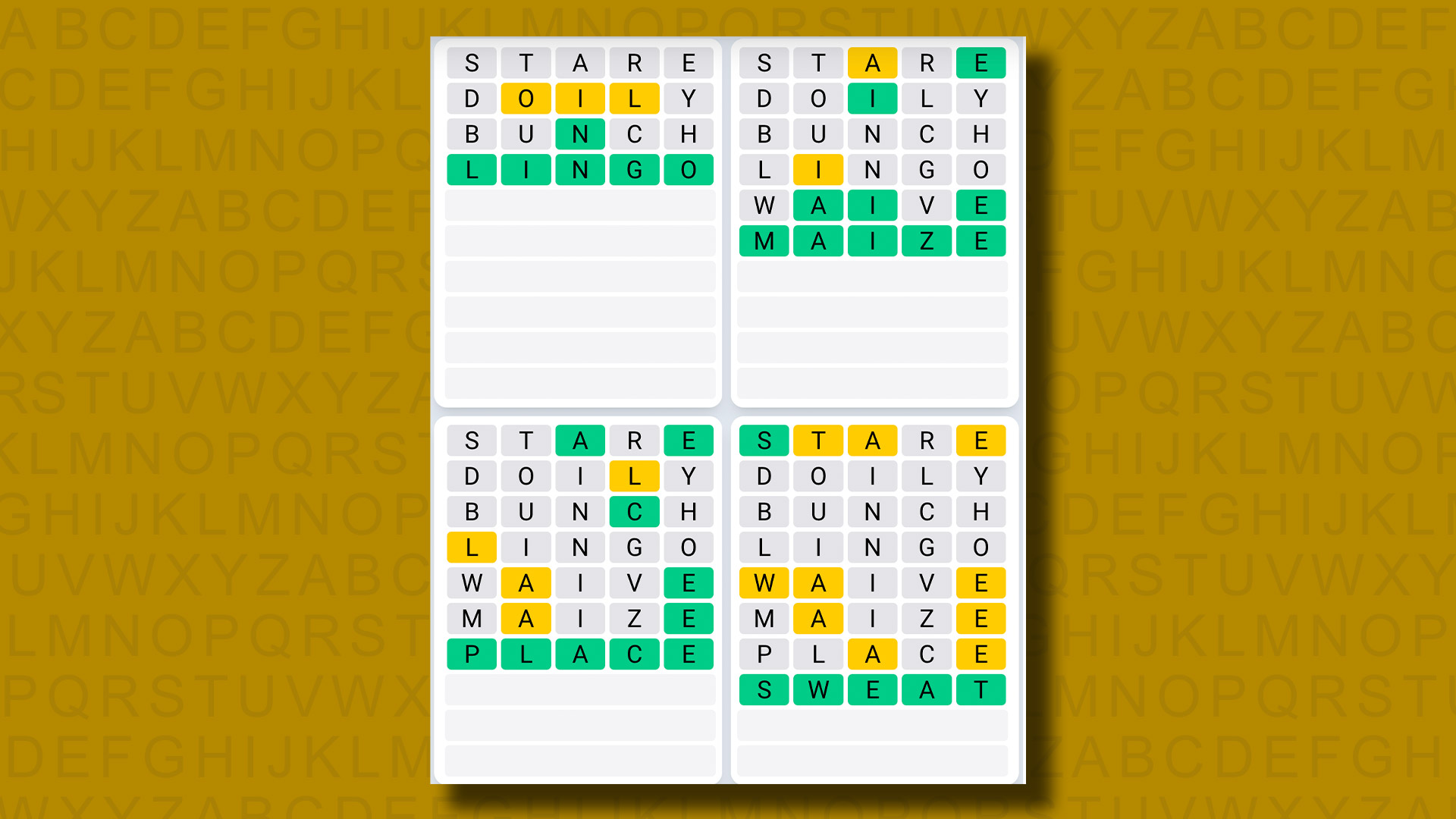
The answers to today’s Quordle Daily Sequence, game #1008, are…
Quordle answers: The past 20
- Quordle #1007, Sunday 27 October: STUNG, CLOUT, SOWER, BASIS
- Quordle #1006, Saturday 26 October: DUCHY, CANNY, BLOCK, SMART
- Quordle #1005, Friday 25 October: PRANK, EXIST, RUDDY, PICKY
- Quordle #1004, Thursday 24 October: DAIRY, RALLY, CURLY, LABEL
- Quordle #1003, Wednesday 23 October: DROSS, ANNEX, GRAVE, BROKE
- Quordle #1002, Tuesday 22 October: ADORE, SMITH, AFOOT, LUCID
- Quordle #1001, Monday 21 October: TREAD, NINTH, GRIEF, UNSET
- Quordle #1000, Sunday 20 October: CORAL, WHOSE, HEIST, SOAPY
- Quordle #999, Saturday 19 October: GUSTY, BROKE, ENJOY, HAZEL
- Quordle #998, Friday 18 October: PUPIL, MOCHA, EGRET, NATAL
- Quordle #997, Thursday 17 October: BUILD, BIRTH, LURCH, SASSY
- Quordle #996, Wednesday 16 October: EERIE, SMIRK, HUNCH, EMBED
- Quordle #995, Tuesday 15 October: UMBRA, BRIEF, GRAVY, TORUS
- Quordle #994, Monday 14 October: ROGUE, STORY, EMCEE, AUNTY
- Quordle #993, Sunday 13 October: UNFIT, NYMPH, THUMB, PUREE
- Quordle #992, Saturday 12 October: SAUCY, UNDUE, EGRET, HELLO
- Quordle #991, Friday 11 October: RINSE, ANIME, PUSHY, ZEBRA
- Quordle #990, Thursday 10 October: UNTIL, MARSH, METAL, WINDY
- Quordle #989, Wednesday 9 October: TRIAL, HUSKY, DOWNY, TRADE
- Quordle #988, Tuesday 8 October: TROUT, HATER, BARGE, DOZEN
Technology
Star Wars’ Daisy Ridley reveals why she finds her Rey return scary

Last year, Lucasfilm announced a handful of promising new film projects set within the Star Wars universe, including one that will follow Rey (Daisy Ridley) as she attempts to rebuild the Jedi Order following the events of 2019’s Star Wars: Episode IX — The Rise of Skywalker. Lucasfilm President Kathleen Kennedy subsequently confirmed in an interview with IGN that the film will take place 15 years after the conclusion of Star Wars’ Sequel Trilogy and will find the Jedi “in disarray” and Rey trying to rebuild the Order “based on the books, based on what she promised Luke (Mark Hamill).”
Since then, progress on the project has been slow. Its original writers, Damon Lindelof and Justin Britt-Gibson, departed the project in March 2023, and their replacement, Peaky Blinders creator Steven Knight, reportedly parted ways with the film recently as well. For her part, Daisy Ridley has remained fairly tight-lipped about the project and its status. In a recent interview with The Hollywood Reporter, though, she did open up about actually preparing to reprise her life-changing Star Wars role.
“I feel like the new one/new ones will be so interesting. Time has passed and a lot has changed for me, personally,” Ridley told the outlet. “It’ll be interesting to come back to someone who I know so well, but in such a different moment. For me to inhabit Rey again after all the time that we haven’t seen her, it’s actually scary, but it’s also exciting.”

Given how much time has passed since Ridley worked on The Rise of Skywalker, it’s easy to see why it might seem both daunting and a bit strange to return to her role in that film. Ridley, who became a household name because of her breakout turn as Rey in 2015’s Star Wars: Episode VII — The Force Awakens, has also grown a lot as an actress in the years since she made her Star Wars debut. To watch her return to a role that she played when she was less seasoned as a big-screen performer should be an interesting experience for Star Wars fans everywhere.
It is, unfortunately, unclear when fans will actually get to see Ridley back as Rey. Sharmeen Obaid-Chinoy is still attached to direct the film in question, but its behind-the-scenes screenwriter exits have cast doubt on when it will actually begin shooting — let alone when it will hit theaters. There is a lot of pressure on the film to get Star Wars’ post-Sequel Trilogy era off to a strong start, which may be why Lucasfilm seems to be taking so much time developing it.
In the meantime, while fans wait for an official update on the project and Ridley continues preparing to step back into her Jedi robes, Lucasfilm still has a few other film and TV titles in the pipeline right now. These projects include The Mandalorian & Grogu, which is currently set to hit theaters on May 22, 2026.
-

 Technology1 month ago
Technology1 month agoIs sharing your smartphone PIN part of a healthy relationship?
-

 Science & Environment1 month ago
Science & Environment1 month agoHow to unsnarl a tangle of threads, according to physics
-

 Science & Environment1 month ago
Science & Environment1 month agoHyperelastic gel is one of the stretchiest materials known to science
-

 Science & Environment1 month ago
Science & Environment1 month ago‘Running of the bulls’ festival crowds move like charged particles
-

 Science & Environment1 month ago
Science & Environment1 month agoMaxwell’s demon charges quantum batteries inside of a quantum computer
-

 Technology1 month ago
Technology1 month agoWould-be reality TV contestants ‘not looking real’
-

 Science & Environment1 month ago
Science & Environment1 month agoX-rays reveal half-billion-year-old insect ancestor
-

 Science & Environment1 month ago
Science & Environment1 month agoSunlight-trapping device can generate temperatures over 1000°C
-

 Technology4 weeks ago
Technology4 weeks agoUkraine is using AI to manage the removal of Russian landmines
-

 Science & Environment1 month ago
Science & Environment1 month agoLiquid crystals could improve quantum communication devices
-

 TV4 weeks ago
TV4 weeks agoসারাদেশে দিনব্যাপী বৃষ্টির পূর্বাভাস; সমুদ্রবন্দরে ৩ নম্বর সংকেত | Weather Today | Jamuna TV
-

 Science & Environment1 month ago
Science & Environment1 month agoQuantum ‘supersolid’ matter stirred using magnets
-

 Technology3 weeks ago
Technology3 weeks agoSamsung Passkeys will work with Samsung’s smart home devices
-

 Sport4 weeks ago
Sport4 weeks agoBoxing: World champion Nick Ball set for Liverpool homecoming against Ronny Rios
-

 Football4 weeks ago
Football4 weeks agoRangers & Celtic ready for first SWPL derby showdown
-

 Science & Environment1 month ago
Science & Environment1 month agoPhysicists have worked out how to melt any material
-

 Science & Environment1 month ago
Science & Environment1 month agoLaser helps turn an electron into a coil of mass and charge
-

 News3 weeks ago
News3 weeks agoMassive blasts in Beirut after renewed Israeli air strikes
-

 MMA3 weeks ago
MMA3 weeks ago‘Uncrowned queen’ Kayla Harrison tastes blood, wants UFC title run
-

 Science & Environment1 month ago
Science & Environment1 month agoA new kind of experiment at the Large Hadron Collider could unravel quantum reality
-

 News3 weeks ago
News3 weeks ago‘Blacks for Trump’ and Pennsylvania progressives play for undecided voters
-

 News3 weeks ago
News3 weeks ago▶ Hamas Spent $1B on Tunnels Instead of Investing in a Future for Gaza’s People
-

 News3 weeks ago
News3 weeks agoNavigating the News Void: Opportunities for Revitalization
-

 MMA4 weeks ago
MMA4 weeks agoDana White’s Contender Series 74 recap, analysis, winner grades
-

 Technology4 weeks ago
Technology4 weeks agoGmail gets redesigned summary cards with more data & features
-

 Football4 weeks ago
Football4 weeks agoWhy does Prince William support Aston Villa?
-

 Technology1 month ago
Technology1 month agoRussia is building ground-based kamikaze robots out of old hoverboards
-

 Womens Workouts1 month ago
Womens Workouts1 month ago3 Day Full Body Women’s Dumbbell Only Workout
-

 MMA3 weeks ago
MMA3 weeks agoPereira vs. Rountree prediction: Champ chases legend status
-

 Business3 weeks ago
Business3 weeks agoWhen to tip and when not to tip
-

 Sport3 weeks ago
Sport3 weeks agoAaron Ramsdale: Southampton goalkeeper left Arsenal for more game time
-

 Technology4 weeks ago
Technology4 weeks agoMicrophone made of atom-thick graphene could be used in smartphones
-

 Sport3 weeks ago
Sport3 weeks agoWales fall to second loss of WXV against Italy
-

 Technology4 weeks ago
Technology4 weeks agoMusk faces SEC questions over X takeover
-

 Sport3 weeks ago
Sport3 weeks agoMan City ask for Premier League season to be DELAYED as Pep Guardiola escalates fixture pile-up row
-

 Science & Environment1 month ago
Science & Environment1 month agoWhy this is a golden age for life to thrive across the universe
-
Business4 weeks ago
DoJ accuses Donald Trump of ‘private criminal effort’ to overturn 2020 election
-

 MMA3 weeks ago
MMA3 weeks agoKetlen Vieira vs. Kayla Harrison pick, start time, odds: UFC 307
-

 Technology3 weeks ago
Technology3 weeks agoMicrosoft just dropped Drasi, and it could change how we handle big data
-

 Money3 weeks ago
Money3 weeks agoWetherspoons issues update on closures – see the full list of five still at risk and 26 gone for good
-

 Science & Environment1 month ago
Science & Environment1 month agoA slight curve helps rocks make the biggest splash
-

 Science & Environment1 month ago
Science & Environment1 month agoNuclear fusion experiment overcomes two key operating hurdles
-

 Technology1 month ago
Technology1 month agoMeta has a major opportunity to win the AI hardware race
-

 Science & Environment1 month ago
Science & Environment1 month agoQuantum forces used to automatically assemble tiny device
-

 Science & Environment1 month ago
Science & Environment1 month agoITER: Is the world’s biggest fusion experiment dead after new delay to 2035?
-

 News1 month ago
News1 month ago▶️ Hamas in the West Bank: Rising Support and Deadly Attacks You Might Not Know About
-

 Technology1 month ago
Technology1 month agoWhy Machines Learn: A clever primer makes sense of what makes AI possible
-

 Technology4 weeks ago
Technology4 weeks agoEpic Games CEO Tim Sweeney renews blast at ‘gatekeeper’ platform owners
-

 News4 weeks ago
News4 weeks agoWoman who died of cancer ‘was misdiagnosed on phone call with GP’
-

 Sport4 weeks ago
Sport4 weeks agoSturm Graz: How Austrians ended Red Bull’s title dominance
-

 MMA3 weeks ago
MMA3 weeks ago‘I was fighting on automatic pilot’ at UFC 306
-

 Technology4 weeks ago
Technology4 weeks agoThis AI video generator can melt, crush, blow up, or turn anything into cake
-
Business4 weeks ago
Sterling slides after Bailey says BoE could be ‘a bit more aggressive’ on rates
-

 Sport4 weeks ago
Sport4 weeks agoChina Open: Carlos Alcaraz recovers to beat Jannik Sinner in dramatic final
-

 News3 weeks ago
News3 weeks agoFamily plans to honor hurricane victim using logs from fallen tree that killed him
-

 Sport3 weeks ago
Sport3 weeks ago2024 ICC Women’s T20 World Cup: Pakistan beat Sri Lanka
-

 Entertainment3 weeks ago
Entertainment3 weeks agoNew documentary explores actor Christopher Reeve’s life and legacy
-

 Science & Environment1 month ago
Science & Environment1 month agoNerve fibres in the brain could generate quantum entanglement
-

 MMA4 weeks ago
MMA4 weeks agoJulianna Peña trashes Raquel Pennington’s behavior as champ
-

 News3 weeks ago
News3 weeks agoHull KR 10-8 Warrington Wolves – Robins reach first Super League Grand Final
-
Business3 weeks ago
The search for Japan’s ‘lost’ art
-

 Technology3 weeks ago
Technology3 weeks agoThe best budget robot vacuums for 2024
-

 Sport3 weeks ago
Sport3 weeks agoCoco Gauff stages superb comeback to reach China Open final
-

 News4 weeks ago
News4 weeks agoRwanda restricts funeral sizes following outbreak
-

 Business4 weeks ago
Business4 weeks agoChancellor Rachel Reeves says she needs to raise £20bn. How might she do it?
-

 News3 weeks ago
News3 weeks agoCornell is about to deport a student over Palestine activism
-

 Technology3 weeks ago
Technology3 weeks agoTexas is suing TikTok for allegedly violating its new child privacy law
-

 Science & Environment1 month ago
Science & Environment1 month agoTime travel sci-fi novel is a rip-roaringly good thought experiment
-

 Science & Environment1 month ago
Science & Environment1 month agoHow to wrap your mind around the real multiverse
-

 News1 month ago
News1 month ago▶️ Media Bias: How They Spin Attack on Hezbollah and Ignore the Reality
-

 Business4 weeks ago
Business4 weeks agoStocks Tumble in Japan After Party’s Election of New Prime Minister
-
Business4 weeks ago
Bank of England warns of ‘future stress’ from hedge fund bets against US Treasuries
-

 News3 weeks ago
News3 weeks agoGerman Car Company Declares Bankruptcy – 200 Employees Lose Their Jobs
-

 Technology3 weeks ago
Technology3 weeks agoIf you’ve ever considered smart glasses, this Amazon deal is for you
-

 Technology4 weeks ago
Technology4 weeks agoJ.B. Hunt and UP.Labs launch venture lab to build logistics startups
-

 MMA3 weeks ago
MMA3 weeks agoKayla Harrison gets involved in nasty war of words with Julianna Pena and Ketlen Vieira
-

 Technology3 weeks ago
Technology3 weeks agoCheck, Remote, and Gusto discuss the future of work at Disrupt 2024
-

 MMA3 weeks ago
MMA3 weeks agoUFC 307 preview show: Will Alex Pereira’s wild ride continue, or does Khalil Rountree shock the world?
-
Business3 weeks ago
Head of UK Competition Appeal Tribunal to step down after rebuke for serious misconduct
-

 Business3 weeks ago
Business3 weeks agoStark difference in UK and Ireland’s budgets
-

 MMA3 weeks ago
MMA3 weeks agoPereira vs. Rountree preview show live stream
-

 Technology3 weeks ago
Technology3 weeks agoThe best shows on Max (formerly HBO Max) right now
-

 Sport4 weeks ago
Sport4 weeks agoWorld’s sexiest referee Claudia Romani shows off incredible figure in animal print bikini on South Beach
-

 Science & Environment4 weeks ago
Science & Environment4 weeks agoMarkets watch for dangers of further escalation
-

 Football4 weeks ago
Football4 weeks agoSimo Valakari: New St Johnstone boss says Scotland special in his heart
-

 Technology3 weeks ago
Technology3 weeks agoApple iPhone 16 Plus vs Samsung Galaxy S24+
-
Politics4 weeks ago
Rosie Duffield’s savage departure raises difficult questions for Keir Starmer. He’d be foolish to ignore them | Gaby Hinsliff
-

 Technology3 weeks ago
Technology3 weeks agoOpenAI secured more billions, but there’s still capital left for other startups
-

 Health & fitness4 weeks ago
Health & fitness4 weeks agoNHS surgeon who couldn’t find his scalpel cut patient’s chest open with the penknife he used to slice up his lunch
-

 Money3 weeks ago
Money3 weeks agoPub selling Britain’s ‘CHEAPEST’ pints for just £2.60 – but you’ll have to follow super-strict rules to get in
-

 MMA3 weeks ago
MMA3 weeks ago‘Dirt decision’: Conor McGregor, pros react to Jose Aldo’s razor-thin loss at UFC 307
-

 News1 month ago
News1 month agoOur millionaire neighbour blocks us from using public footpath & screams at us in street.. it’s like living in a WARZONE – WordupNews
-
Business4 weeks ago
how UniCredit built its Commerzbank stake
-

 MMA4 weeks ago
MMA4 weeks agoAlex Pereira faces ‘trap game’ vs. Khalil Rountree
-

 News4 weeks ago
News4 weeks agoLiverpool secure win over Bologna on a night that shows this format might work
-

 Technology4 weeks ago
Technology4 weeks agoAmazon’s Ring just doubled the price of its alarm monitoring service for grandfathered customers
-

 TV3 weeks ago
TV3 weeks agoLove Island star sparks feud rumours as one Islander is missing from glam girls’ night
-

 Technology3 weeks ago
Technology3 weeks agoSingleStore’s BryteFlow acquisition targets data integration
-

 Sport3 weeks ago
Sport3 weeks agoPremiership Women’s Rugby: Exeter Chiefs boss unhappy with WXV clash
-
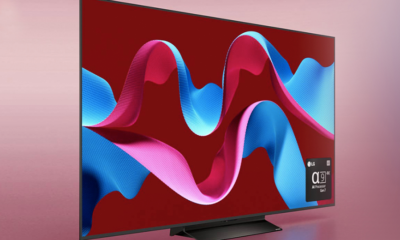
 Technology3 weeks ago
Technology3 weeks agoLG C4 OLED smart TVs hit record-low prices ahead of Prime Day

You must be logged in to post a comment Login